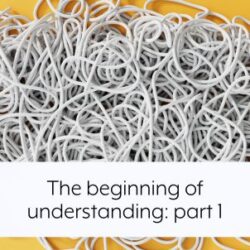
Basis of guidelines
There are no National Institute of Health and Clinical Excellence (NICE) guidelines for the treatment of dissociative identity disorder (DID) and so the best available treatment guidelines are those supplied by the International Society for the Study of Trauma and Dissociation (ISSTD). They can be found here.
Definition
The view of many people with regard to dissociative identity disorder has been influenced by Hollywood representations such as in the book and film Sybil. Many people also believe that it is a rare condition. But an increasing body of research, literature and clinical material is providing a new and more accurate representation of dissociative identity disorder.
Dissociative disorders are characterised by ‘a disruption in the usually integrated functions of consciousness, memory, identity or perception of the environment’. So for example memories and feelings may not go together – memories may be recalled with no accompanying affect or emotions, or there may be overwhelming feelings with no conscious memory of their cause. There is also often a lack of a coherent sense of autobiography, and this itself leads to problems with a sense of identity – ‘Who am I?’ and ‘What has happened in my life?’ This all results from dissociation acting as a creative survival mechanism in the face of overwhelming trauma, whereby the mind shields itself by segregating the experience, or splitting it off into its constituent parts rather than experiencing it as what would be an unendurable ‘whole’.
There are a range of dissociative disorders on a spectrum of severity, and this spectrum is usually correlated to how extreme and chronic the trauma experienced in early childhood was. The least extreme on the spectrum is post-
The DSM-
The essence of dissociative identity disorder is ‘dissociating’ or ‘splitting off’ from an experience – and then in time, splitting off from the ‘parts’ of the self that hold those experiences – in order to survive otherwise unendurable trauma. It is a creative coping mechanism, not a ‘dysfunction’. However, it becomes dysfunctional when the environment is no longer traumatic and yet the person, and all the ‘dissociated identities’ of that person, still act and live as if it is.
In practice, the vast majority of people with dissociative identity disorder do not obviously present as if they have ‘multiple personalities’. Instead they present with a number of both dissociative and post-
Prevalence
Dissociative identity disorder is a well-
Etiology
Many experts in dissociative disorders believe that alternate identities (sometimes known as ‘alters’ or ‘parts’ etc) result from overwhelming traumatic experiences in early childhood, in the context of disturbed caretaker-
Dissociative identity disorder is normally caused by severe and chronic childhood trauma, which may include physical and sexual abuse and/or neglect, episodes of extreme terror, and/or repeated medical trauma. Disorganised attachment in one or both parents is also a contributory factor. According to a recent study by Brand et al, 86 per cent of the sample of dissociative identity disorder patients reported a history of sexual abuse. Many clinicians position DID in a post-
Diagnosis
People with dissociative identity disorder often spend many years in the mental health system, and it is often misdiagnosed as schizophrenia or other psychotic disorders, affective disorders, substance abuse disorders, or a personality disorder (most commonly borderline personality disorder). There are a number of well-
Treatment
The treatment of choice for dissociative identity disorder is long-
The consensus of experts is that phase-
- Establishing safety, stabilisation and symptom reduction;
- Working through and integrating traumatic memories;
- Integration and rehabilitation.
In reality, there is unlikely to be a linear progression through these three stages: more commonly the work will spiral through each phase, with a frequent need to return to stabilisation work during the middle and later stages. As well as addressing dissociative symptoms, and working through and integrating the underlying trauma, a third area of treatment is that of ‘attachment’, with the vast majority of dissociative identity disorder clients presenting with disorganised attachment patterns.
Issues for the therapist
The extreme and chronic nature of the trauma suffered by many dissociative identity disorder clients can lead to complex and changeable transference and countertransference responses in the therapy. Extreme care must be given to the issue of boundaries: the history of many dissociative identity disorder clients is steeped in boundary violations and so there is significant potential for re-
It is the quality of the relationship between therapist and client which is the best predictor of therapeutic success, and so a warm, empathic, consistent, engaged therapist who is willing to be flexible and work long-
Working with ‘alter personalities’
A client with dissociative identity disorder, at some point during therapy, will invariably present with their ‘alternate personalities’, otherwise known as ‘alters’, ‘parts’ etc. These may present as having different ages, a different gender, different characteristics and often different levels of awareness of their autobiography. Some will be aware of or ‘co-
It is important to bear in mind that the parts ‘are not actually separate identities or personalities in one body, but rather parts of a single individual that are not yet functioning together in a smooth, coordinated, and flexible way’. The ultimate work of therapy is to facilitate an increased coordination between these parts, so that they can indeed function together and perhaps even merge or ‘fuse’. By working on increased communication and cooperation between parts, often there is a corresponding increase in levels of co-
There have been some helpful ways of understanding and classifying these different ‘parts’ in terms of the role and function they play in the person’s life as a whole. Van der Hart et al propose in their theory of ‘structural dissociation’ a basic division between the Apparently Normal Personalities (ANPs) and the Emotional Personalities (EPs) – the former tend to be preoccupied with getting on with life and manage by blocking out memories and experiences connected to the past traumatic events, while the EPs are ‘stuck’ in those experiences and experience them as now rather than as past. Much of the therapy in working with dissociative identity disorder is concerned with resolving conflicts between this basic split, and in resolving a further level of conflicts between different EPs’ favoured ‘survival response’ such as fight, flight, freeze or submit. The entire personality is structured around the causative trauma, either in experiencing it (the EPs) or avoiding it (the ANPs). The theory of structural dissociation can be very helpful in coming to find helpful ways of working with all of the different parts of the personality.
There has been much debate and controversy about whether engaging with ‘alternate personalities’ is therapeutic or not, but the ISSTD guidelines1 do advise engaging with all parts of a person’s personality in a non-
Working with dissociative identity disorder clients is demanding and often long-
References
- International Society for the Study of Trauma and Dissociation. Guidelines for treating dissociative identity disorder in adults, third revision. Journal of Trauma and Dissociation. 2011; 12:115-
187. - American Psychiatric Association. Diagnostic and Statistical Manual for Mental Disorders (DSM-
IV). Washington DC: American Psychiatric Association; 1994. - American Psychiatric Association. Diagnostic and Statistical Manual for Mental Disorders (DSM-
5). Washington DC: American Psychiatric Association; 2013. - Kluft RP, Fine C. Hypnosis in the treatment of DID: an advanced workshop. Presented at the International Society for the Study of Dissociation 26th Annual Conference. Washington DC; 2009.
- Howell EF. Understanding and treating dissociative identity disorder. New York: Routledge; 2011.
- Main M, Hesse E. Disorganization and disorientation in infant strange situation behaviour: phenotypic resemblance to dissociative states? In: Michelson L, Ray W (eds). Handbook of dissociation. New York: Plenum Press; 1986.
- Brand BL, Classen CC, Lanius R, Loewenstein RJ, McNary SW, Pain C et al. A naturalistic study of dissociative identity disorder and dissociative disorder not otherwise specified patients treated by community clinicians. Psychological Trauma: Theory, Research, Practice, and Policy. 2009; 1:153-
171. - Bernstein EM, Putnam FW. Development, reliability and validity of a dissociation scale. The Journal of Nervous Mental Disease. 1986; 174(12):727-
35. - Nijenhuis ERS, Van Dyck R, Spinhoven P, Van der Hart O, Chatrou M, Vanderlinden J et al. Somatoform dissociation discriminates between diagnostic categories over and above general psychopathology. Australian and New Zealand Journal of Psychiatry. 1999; 33:512–520.
- Steinberg M. Structured clinical interview for DSM-
IV disorders. Washington DC: American Psychiatric Press; 1994. - Ogden P, Minton K, Pain C. Trauma and the body: a sensorimotor approach to psychotherapy. New York: WW Norton & Co; 2006.
- EMDR dissociative disorders task force. Recommended guidelines: a general guide to EMDR’s use in the dissociative disorders. In: Shapiro F. Eye movement desensitization and reprocessing: basic principles, protocols and procedures (2nd ed). New York: Guilford Press; 2001.
- Van der Hart O, Nijenhuis ERS, Steele K. The haunted self: structural dissociation and the treatment of chronic traumatization. New York: WW Norton & Co; 2006.
- Boon S, Steele K, Van der Hart O. Coping with trauma-
related dissociation. New York: WW Norton & Co; 2011.


